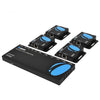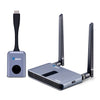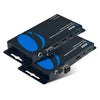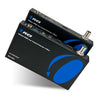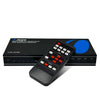What Is the Purpose of a Video Wall?

Video walls make for a perfect backdrop to your staged events, or the perfect screening tool for your next film showing. When used properly, video walls level up any type of event. They can heighten your show's quality, and at the same time, improve the watching experience of your audience.
Start planning your next event with a video wall! Find out everything you need to know about it here.
What is a video wall?
Basically, a video wall is a combined collection of multiple screens or monitors that function as one huge screen. You can think of it as stacks of small televisions that when put together, forms a single picture. They can have different types of formations, such as 2x2, 4x2, 4x4, and so on.
What’s the purpose of a video wall?
The main purpose of video walls is to display large, high-quality content, and can be used in various ways. Here are some of the most common video wall purposes:
- One of the most popular uses of video walls is for Marketing. It is often used to display branded content, product demonstrations, or even to publish interactive marketing campaigns. Some sample applications include digital billboards and digital advertising trucks.
- As mentioned earlier, we can also commonly see video walls being used in entertainment settings. In concerts, video walls can be used to display live footage of the performer for the people at the back to see. For live TV shows, video walls can be used to feature show recaps and more.
- Lastly, video walls are also commonly used in command centers, such as emergency response centers, transportation hubs, or security offices. For example, a video wall in a traffic control center can be used to monitor road accidents, traffic flow, and more.
Aside from those mentioned above, video walls can also be used in a whole lot more applications. One of the things that make video walls highly dependable is because of the technology they use.
What technology do video walls use?
The display itself isn’t that much complicated because most video walls use LED or LCD panels, the same technology as your regular TVs and monitors.
However, most monitors and screens that are typically used for video walls have specific designs such as:
- Very narrow to no bezels to help minimize the gap between monitors and maintain the continuity of the display.
- These screens also usually have an added future-proof design that is incorporated with long-term serviceability since video walls are mostly used for long periods of time.
- An added capability of handling and containing hardware that is able to stack similar screens together with connectors to sequence or daisy-chain the power, the video, and the command signals between the number of screens.
- "Daisy-chaining" refers to the connection one monitor makes to another monitor. By daisy-chaining your display, you won't need to connect each individual screen to your controller.
Controlling a video wall with so many screens is fairly difficult, which is why there are video wall controllers to help manage them simultaneously. A video wall controller (sometimes called a "processor) is a splitting device used on a single image that divides it into parts to be displayed on individual screens.
Video walls have different types of controllers, two of the most common are:
- Software-based controllers
This type of video wall controller uses a computer with software specifically designed for managing video walls. To manage a video wall with a software-based controller, you simply have to hook up your video wall to your computer and run your specialized software. The software can usually be run on a standard PC or server and can be easily updated and customized.
- Hardware-based controllers
Hardware-based controllers use a dedicated device to manage your video wall. This type of controller is specifically designed for video wall management, and it often has everything you need to smoothly run your display.
With the power to handle high-resolution content and the ability to support multiple display input and output formats, hardware-based controllers are often more reliable and can offer better performance than software-based solutions.
Now that you’re more familiar with video walls, let’s talk about how you can start building one.
What do you need to build a video wall?
Here’s everything you need and what you should consider when building your own video wall:
- Display screens
Your display screens are what will make up your video wall. The number of monitors you need highly depends on your plans, and the same goes for the size of your screens. Before getting display screens for your video wall, make sure you already know what you’ll be using them for.
- Video wall controller
As discussed earlier, video wall controllers are what power up your video wall. Decide if you want a software-based or a hardware-based controller. The type of controller you need may also depend on where you’re planning to use your video walls. If you’re planning to bring a video wall for your large-scale events where you need to display the best possible resolution you can, a hardware-based controller might be what you need.
- Mounting hardware
Of course, you need a sturdy place where you can securely mount your display screens. Some mounting hardware needs to be fixed on a wall, while some are more portable. Whichever one you choose, make sure you consider the weight and size of your screens when getting one.
- Cabling
To connect your display screens to your video wall controller, you need the right type of cabling. Check your display screens and video wall controller to know which type of cable you’ll be needing.
Other than these, the last thing you’ll need is your display source. The display source is the content that’ll be displayed on your video wall. It can be a pre-recorded video, a live video feed, or other types of digital content.
Once you have everything in hand, your video wall setup is good to go! On to the next and final topic we’ll be discussing, what does a video wall cost?
To be clear, there is no fixed price. To give you some idea of the costing of video walls, here are some video walls you can readily buy.
The OREI UHD-204VW is a 4K 2X2 seamless video wall with a software-based controller. It has 4 display screens that can be arranged to look like a large 4K TV. However, you can customize the layout and go for 2 1x2 displays, a 1x3 display, or a 1x4 display.
The cost for this type of video wall is $449.
TFor the OREI UHD-808VW, it is a 4x2 video wall with 8 individual inputs and outputs. Similar to the 204VW, this video wall also supports 4K. With the option for individual inputs and outputs, you can use the UHD-808VW in your home and your business. At home, you can simultaneously use all video walls for 8 different input sources such as your Playstation, Blu-ray Player, PC, and more. For your business, the 4x2 video wall setup can provide you with a great backdrop for an event.
The OREI UHD-808VW costs $1,299.
As you can see, the cost of video walls goes up as the number of screens increases. Aside from that, the cost also increases when there are more available functions and features.
Are you ready to buy your video wall? Check out our shop to see more variations of video walls! You may also find all relevant information for each product on their respective pages.
Learn more about video walls and HDMI devices by browsing through our blog!


